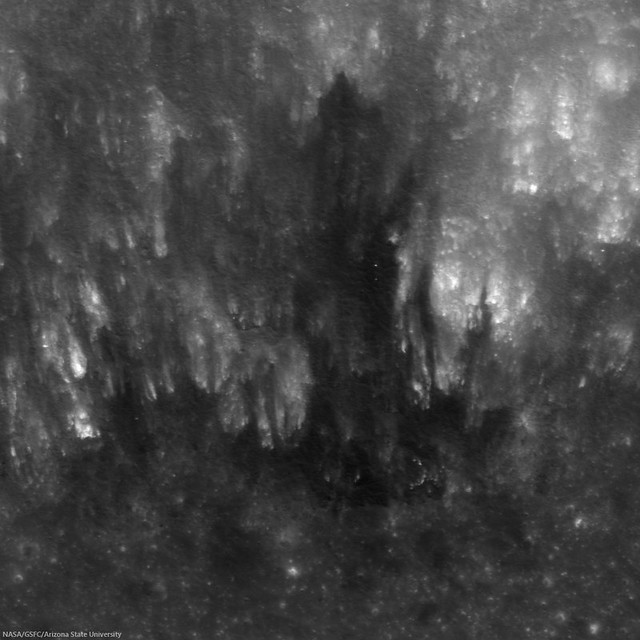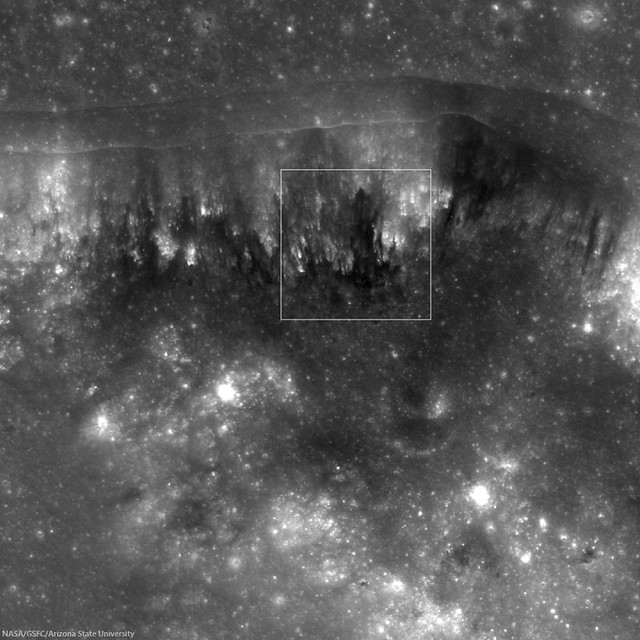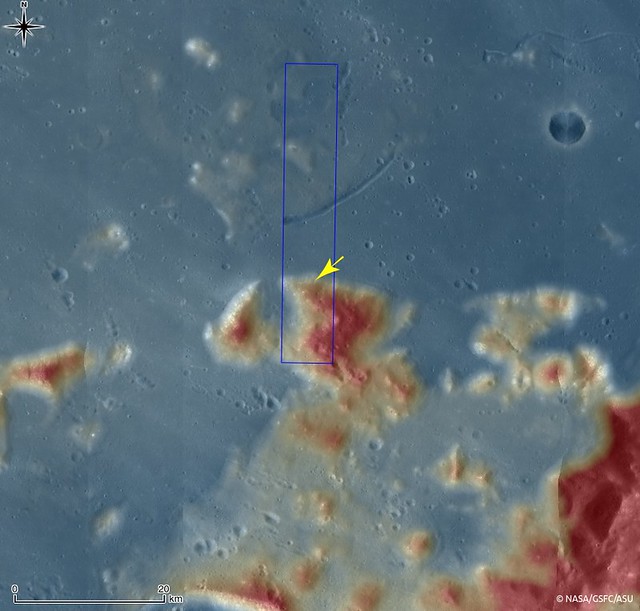 |
| Northern slope (top) of an unnamed mountain in Montes Carpatus. LROC Narrow Angle Camera (NAC) observation M186077208R, LRO orbit 12500, March 11, 2012; angle of incidence 18.28° at 1.04 meters resolution, from 132.3 km over 17.73°N, 331.11°E [NASA/GSFC/Arizona State University]. |
Hiroyuki Sato
LROC News System
Montes Carpatus is a mountain range composed of multiple peaks and rises along the southern edge of Mare Imbrium.
The bases of several peaks were flooded and are now surrounded by the mare basalts that fill the Imbrium basin. The opening image highlights the northern slope of an unnamed mountain in the range. The mountain is about 14 km in diameter at its current base, and its height is about 1700 meters.
These low reflectance materials, which cover the broad top of this mountain, have over time cascaded down the northern slope. Similar low reflectance materials are distributed at the top of neighboring mountains of Montes Carpatus, but their origin is not clear. This region, including the Carpatus Mountains, was blanketed by ejecta from the impact that formed Copernicus crater. The ejecta thrown here from Copernicus may have contained pyroclastic materials, the dark volcanic products of explosive eruptions, or impact melt now exposed on the mountain slopes. Alternatively, dark pyroclastic materials were originally deposited atop these mountains.
New NAC and WAC images continue to present more detailed views of the Moon's surface, allowing us to read the complicated geologic history of the lunar mare.
Explore the dark materials flowing down the mountain in full NAC frame, HERE.
Related Posts:
Alphonsus crater mantled floor fracture
A Dark Cascade at Sulpicius Gallus
Dark streaks in Diophantus crater
Dark Material Flows
Downhill Creep or Flow?
Layer of Pyroclastics
Rima Marius Layering
Dark Splash?
LROC News System
Montes Carpatus is a mountain range composed of multiple peaks and rises along the southern edge of Mare Imbrium.
The bases of several peaks were flooded and are now surrounded by the mare basalts that fill the Imbrium basin. The opening image highlights the northern slope of an unnamed mountain in the range. The mountain is about 14 km in diameter at its current base, and its height is about 1700 meters.
 |
| Context view of LROC NAC M186077208R [NASA/GSFC/Arizona State University]. |
New NAC and WAC images continue to present more detailed views of the Moon's surface, allowing us to read the complicated geologic history of the lunar mare.
 |
| A mountain that is part of Montes Carpatus is shown in a LROC WAC monochrome mosaic with WAC stereo (GLD100) topography overlain (red represents higher elevations and blue represents lower elevations); image center at 17.27°N, 331.33°E; the footprint of the NAC frame (blue square) and the location of opening image (yellow arrow) are indicated [NASA/GSFC/Arizona State University]. |
Related Posts:
Alphonsus crater mantled floor fracture
A Dark Cascade at Sulpicius Gallus
Dark streaks in Diophantus crater
Dark Material Flows
Downhill Creep or Flow?
Layer of Pyroclastics
Rima Marius Layering
Dark Splash?


No comments:
Post a Comment